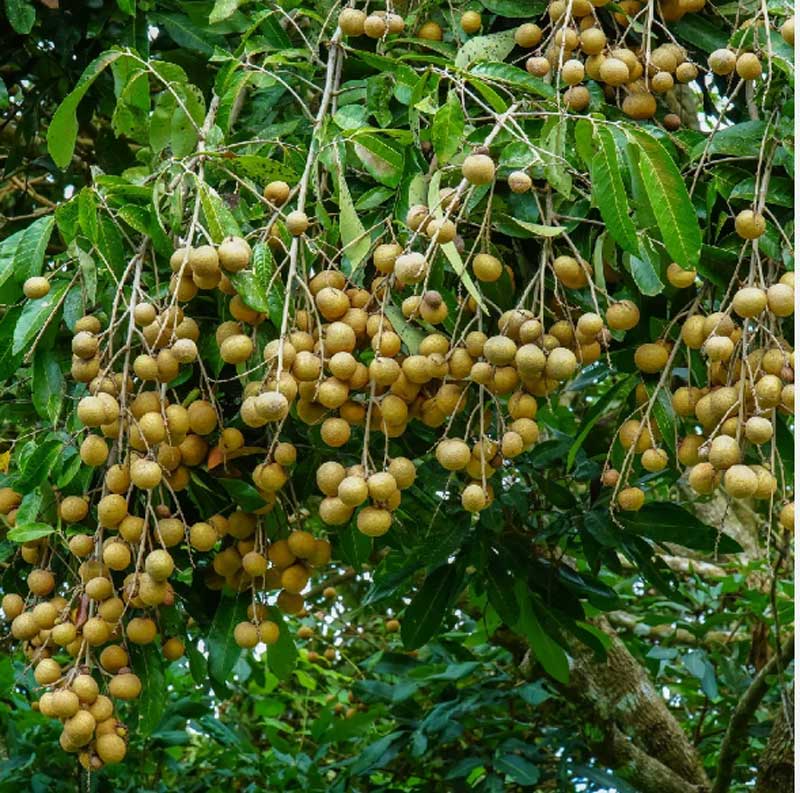Optimizing Fertilization : Strategies and Improving Ornamental Plant Resilience Down the Chain
Ruud van Zundert
Technical Specialist, Syngenta Flowers
In the world of horticulture, the commitment to delivering ornamental plants of long-lasting exceptional quality extends the boundaries of the nursery.
The customer is looking not only for a plant that meets specifications at the time of receipt – one that has already withstood the previous stress of transportation and changing conditions – but also for one that will remain fresh for an extended period of time, even under less-than-optimal conditions.
The key to achieving this can be found primarily in the composition of the substrate. It must have the ability to retain nutrients but also gradually release them to the plant and therefore plays a crucial role in growing a sturdy and resilient plant. The other is the long-term provision of sufficient nutrients in the right proportions.
This article focuses on the long-term availability of nutrients in the right proportions and the role of fertilizers/micronutrients in retail-ready plants.
Importance of Constant, Balanced Fertigation For optimal growth, plants need 17 essential nutrients, each of them playing a unique role. These nutrients, obtained from various sources, include primary nutrients such as Nitrogen (N), Phosphorus (P) and Potassium (K), followed by secondary nutrients such as Calcium (Ca), Magnesium (Mg) and Sulfur (S), along with 11 micronutrients.
Meeting the nutritional needs of plants is essential for healthy growth. Balanced and recurrent fertilization until delivery ensures a consistent supply of nutrients, which promotes robust and resilient crop growth while minimizing environmental damage. The principle of “Liebig’s barrel” underscores the importance of effective fertigation management during all plant stages until leaving the nursery. It`s “Law of Minimum” states that crop growth is limited by the scarcest resource.

However, nutrients in substrate also interact with one another, leading to changes in availability to plants. Mulder’s Chart illustrates these interactions.
Antagonism: Occurs when elevated levels of one nutrient interfere with others, e.g., high Nitrogen reduces Boron, Potassium, and Copper. Synergy or Stimulation: Occurs when high levels of one nutrient increase demand for another, e.g., more Nitrogen demands more Magnesium. Above all, maintain proper electrical conductivity (EC) in the substrate through adequate fertilization until plants are ready for sale. This promotes easy root growth after the ready plants are transferred into substrates with a lower EC. Moreover, maintaining a proper EC in the substrate prevents high root pressure and the development of Botrytis by reducing the risk of exudate guttation through the leaves when the substrate temperature is higher than the plant temperature.
Liebig’s ‘Law of Minimum’ states that crop yield/growth is limited by the nutrient or vital growth factor that is most limiting, even if all other vital factors/nutrients are sufficient.
Managing Substrate pH for Optimal Plant Quality
Maintaining the right pH level in substrate is essential for ensuring healthy plant growth, stress tolerance and resilience down the chain. The pH of the substrate significantly impacts the availability of nutrients and minerals for plant uptake. Nutrients need to be dissolved in water before plants can absorb and use them, and the substrate pH plays a crucial role in this process. In general, most minerals and nutrients are easily accessible to plants when the soil pH falls within the range of 6.0 to 7.0. However, specific plant preferences vary, and slightly acidic soil with a pH between 5.4 and 6.4 is ideal for many plants.
The most common nutrient deficiencies associated with a higher pH include Calcium, Phosphorus, Iron and Copper, but your plants are likely to be experiencing a combination of nutrient deficiencies at the same time. These deficiencies occur when the high pH causes some nutrients to precipitate, making them unavailable to your plants.
Your Marigolds and Pelargonium crops require special attention, preferring a higher end pH of 6.2 to 6.5. When it starts to get below this point, Iron (Fe) and Manganese (Mn) may become overly available and are taken up by plants in excess, accumulating in plant tissue over time which may get to a point, it becomes toxic to the plant and causes damage.
Generally, the pH in the substrate tends to rise due to several factors and processes that influence the substrate chemistry and nutrient availability over time. Understanding why this pH increase occurs is crucial for effective plant management. Here are some key reasons behind rising substrate pH during cultivation:
Irrigation water: Alkaline irrigation water with a high bicarbonate content can lead to a gradual rise in substrate pH over time unless proper adjustments are made with acidic inputs.
Nutrient uptake by Plants: As plants absorb nutrients from the substrate, they primarily take up cations (positively charged ions) such as Calcium (Ca²+), Magnesium (Mg²+), and Potassium (K+). This selective uptake of cations by plants leaves behind anions (negatively charged ions) in the substrate, contributing to an increase in pH over time.
Influence of crops on pH: Certain bedding plants, such as Petunia, Catharanthus/ Annual vinca, and Zinnia may cause the pH to increase.
Microbial Activity: Microorganisms in the substrate can influence pH through their metabolic processes. Some microorganisms produce organic acids that can temporarily lower pH, but as microbial populations change and adapt, their activities can also contribute to a rise in pH.
To mitigate the gradual rise in substrate pH during cultivation, growers can implement strategies such as using acidifying fertilizers, monitoring, and adjusting irrigation water pH, incorporating acidic organic materials, and periodically testing and adjusting the substrate pH as needed.
Regular pH monitoring and corrective actions are crucial for maintaining an optimal pH range that promotes nutrient availability and healthy plant growth.
Certain NPK fertilizers can aid you through an acidic effect resulting from the presence of nitrogen sources based on Ammonium. Nitrogen sources such as Ammonium nitrate or Ammonium sulfate in fertilizers can undergo a microbial process called nitrification after irrigation, which transforms ammonium into nitrate ions. This nitrification process releases hydrogen ions (H+), thereby contributing to a reduction in soil pH, inducing acidity.
By examining the nitrogen sources in NPK fertilizers, namely Ammonium, Nitrate, and Urea, one can gain insight into the extent of acidic influence a specific NPK fertilizer will have on the substrate. Ammonium [NH4+], and Urea [CO(NH2)] are acidic Nitrogen forms, reducing substrate pH. Conversely, Nitrate [NO3-] act as a basic nitrogen form, elevating the pH of the substrate.

Most commercially available fertilizer combines all three nitrogen forms, with the label indicating the percentage of each type and whether it overall increases or decreases pH. This is reported as the fertilizer’s potential acidity or basicity.
Enhancing Nutrient Efficiency through Slow-Release (SRFs) and Controlled-Release Fertilizers (CRFs)
SRFs and CRFs are designed to gradually release essential nutrients. They offer a controlled and sustained nutrient release over an extended period, promoting efficient nutrient availability, unlike traditional water-soluble fertilizers that deliver nutrients rapidly and can cause nutrient imbalances and leaching, resulting in nutrient runoff into the environment.
The key distinction between SRFs and CRFs is the degree of control over nutrient release. SRFs rely on natural processes for nutrient release, such as diffusion, osmosis, and microbial activity, resulting in a more gradual and less precise supply of nutrients. CRFs, with their coated or encapsulated formulations, offer greater control over nutrient release rates, leading to a more targeted and more efficient nutrient delivery to plants.
Studies have shown that bedding plants fertilized with slow-release or controlled-release formulations exhibit improved growth, increased flower production and overall plant quality, especially at critical stages. However, they are not perfect as they often contain remarkably high levels (50%) of Ammoniacal nitrogen (NH4-N), no Calcium (Ca), and little if any Magnesium (Mg).
Selecting an appropriate release fertilizer for bedding plants requires consideration of factors such as plant species, growing season, growing media type and climate. In general, slow-release or controlled-release fertilizers are particularly valuable for short-cycle crops (< 10 weeks), as they provide a steady supply of nutrients over weeks or months.
It is important to match the nutrient composition of the fertilizer to the specific needs of the crop to achieve optimum results. As mentioned earlier, growers should also pay close attention to the longevity of the release fertilizer they choose to ensure consistent nutrient availability throughout the growing season, but more importantly, throughout the end-use chain.
Proper application and management of are crucial for maximizing their benefits. Growers should follow recommended application rates and guidelines provided by manufacturers. Begin with a low to medium label rate, which work well for many short lead-time ornamental plants that are moderate feeders.
Over-application can lead to excessive nutrient accumulation and potential toxicity.
These are just a few of the topics that can positively impact the production of stronger and more resiliant plants, because ultimately, horticulture is not just about producing and transporting plants; it is a sum of science, skill and dedication. From the delicate balance of nutrient interactions to controlling pH, everything must be balanced. The journey of ornamental plants from the nursery to their intended destination is a demonstration of growers’ dedication. It is an enterprise of focus, innovation and adaptability that enables a more sustainable colorful future for both our society and for those who grow them.

















